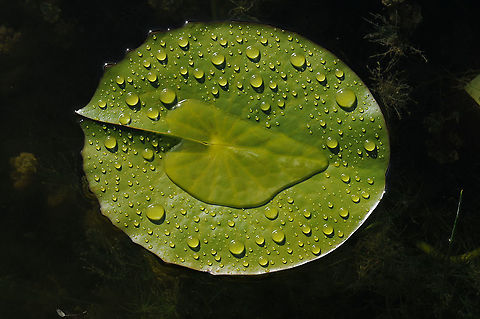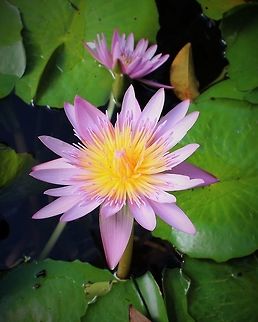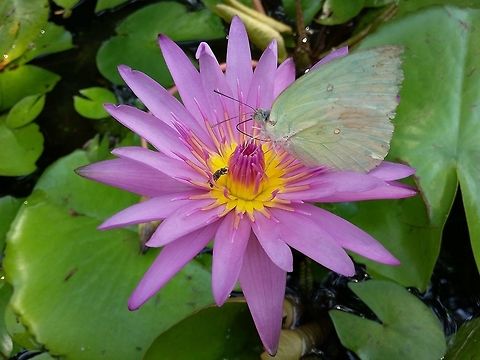
Appearance
The leaves are broadly rounded, 25–40 cm across, with a notch at the leaf stem. The flowers are 10–15 cm in diameter.Reports in the literature by persons unfamiliar with its actual growth and blooming cycle have suggested that the flowers open in the morning, rising to the surface of the water, then close and sink at dusk. In fact, the flower buds rise to the surface over a period of two to three days, and when ready, open at approximately 9–9:30 am and close about 3 pm. The flowers and buds do not rise above the water in the morning, nor do they submerge at night. The flowers have pale bluish-white to sky-blue or mauve petals, smoothly changing to a pale yellow in the centre of the flower.

Distribution
Its original habitat may have been along the Nile and other locations in East Africa. It spread to other locations, however, already in ancient times, like the Indian Subcontinent and Thailand.
Uses
In modern culture, blue lotus flowers are used to make various concoctions including blue lotus tea, wine and martinis. Recipes for such drinks involve steeping or soaking the petals, about 10–20 grams for up to three weeks. Blue lotus 'tea' is prepared by boiling the entire flowers for 10–20 minutes.Recent studies have shown ''N. caerulea'' to have mild psycho-active properties. It may have been used as a sacrament in ancient Egypt, . Eating ''N. caerulea'' can act as a mild sedative. A common misconception is confusion of the lotus with the water lilies ; they are practically unrelated; far from being in the same family, Nymphaea and Nelumbo are members of different orders . However, both ''N. caerulea'' and ''N. nucifera'' contain the alkaloids nuciferine and aporphine. The mildly sedating effects of ''N. caerulea'' makes it a likely candidate for the lotus plant eaten by the mythical Lotophagi in Homer's Odyssey.
This lotus has been used to produce perfumes since ancient times; it is also used in aromatherapy.
References:
Some text fragments are auto parsed from Wikipedia.